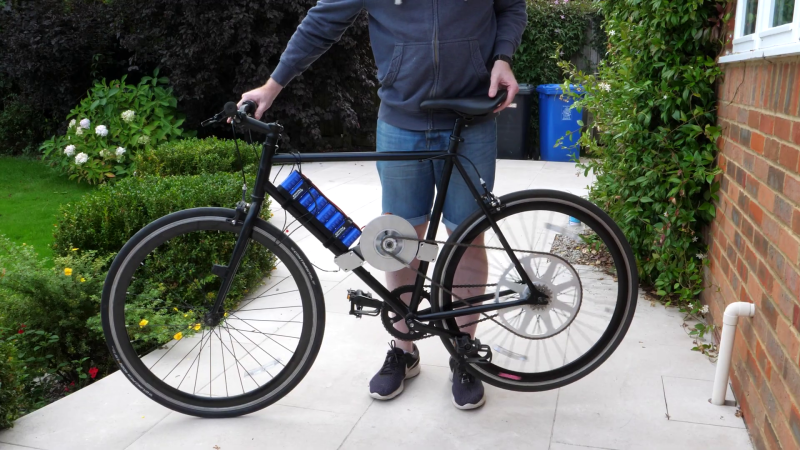Supercapacitor technology often looks like a revolutionary energy storage technology on the surface, but the actual performance numbers can be rather uninspiring. However, for rapid and repeated charge and discharge cycles, supercaps are hard to beat. [Tom Stanton] wanted to see if supercaps have any practical use on e-bikes, and built a DIY electric motor in the process.
One of the problems with supercaps is the rapid voltage drop during discharge compared to batteries, which can limit the amount of usable energy. In an attempt to get around the voltage limitation, [Tom] built his own axial flux motor for the bike, using 3D printed formers for the coils and an aluminum rotor with embedded magnets. He expected torque to be severely limited, so he also machined a large sprocket for the rear wheel. He built a capacitor bank using six 2.7V 400F supercaps, only equivalent to the capacity of a single AA cell. Although it worked, the total range was only around 100 m at low speed. When he hooked the motor up to a conventional battery, he did find that it was quite usable, if a bit underpowered.
The controller for the DIY motor was not capable of doing regenerative braking, so he fitted the capacitors to another e-bike that does have regenerative braking. Using this feature, he was able to reclaim some power while slowing down or going downhill. Since this type of charging cycling is what supercaps are suited for, it worked, but not nearly to the level of being practical.
[Tom]’s projects are a popular feature here on Hackaday, and he has also experimented with supercaps in RC “rockets” and a flywheel for energy storage on the same bike.
Source:: Hackaday

